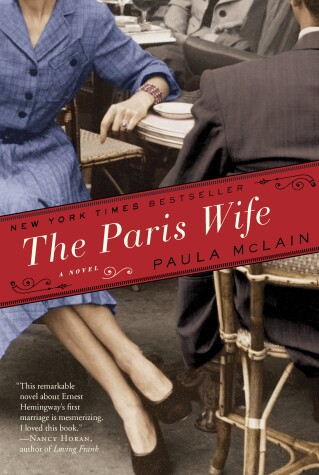Reviewed by Michael @ Knowledge Lost on
The Paris Wife begins in the Chicago in 1920; it is here we meet Hadley and Ernest. Slowly we watch the two fell in love and get married. Soon after they have relocated to Paris where they meet other expatriate authors, such as James Joyce, Ezra Pound and F. Scott Fitzgerald. The love shared between Hadley and Ernest is nothing short of beautiful, while it lasted.
If you know much about Ernest Hemingway, you know this whirlwind romance wasn’t going to last, I’m not spoiling anything by mentioning this. In fact it is mentioned on the back of the book. What I found most interesting about The Paris Wife is the way it is written in a first person perspective. My calculations from the clues in the book, is that Hadley was narrating this account at least thirty-four years after her divorce from Hemingway.
This presents a unique perspective of Ernest Hemingway, the pain and suffering would have been mostly gone and we get a distorted opinion of this famous author. Paula McLain’s masterfully presented Hemingway in such a way that I began to re-evaluate my personal opinion of the man. He was depicted as loving and caring, a struggling author with big dreams but also suffering from the torments of war. This eventually all came crashing down and my opinions where back to how I originally felt about this author; it takes some talent to be able to pull that kind of writing off.
This is the kind of novel you take to Paris. The atmosphere of 1920’s Paris was stunning, I could picture it and I wanted to go back to France and enjoy this city all over again. Unfortunately I don’t live in the world of Midnight in Paris, so I will have to stick with the modern city. Mentions of Shakespeare and Company were particularly special for me as I have very fond memoirs of that wonderful bookstore.
Fictionalised accounts are tricky and should always be taken with a giant grain of salt but I was happy to see Ms McLain ended this book with a note about her research including sources for her research. While this doesn’t mean I’m going to take the entire story as true, it does provide me with some reassurances that the author intended to keep as close to the facts as possible. This meant that at times the novel did feel more like a biography but the story was compelling enough to keep the book enjoyable.
One thing that bothered me after reading some reviews about this book is the people who hated this book because of the ‘unlikeable character’ when referring to Hemingway. I’ve always thought of the author as an unlikeable person (the man was a dick). What I was impressed with is the fact that Paula McLain managed to alter my opinion and try to look at things from another perspective. He was self-destructive and often came across as a man with no remorse but seeing his downward spiral on the page is what made this journey interesting.
I read this book for Jazz Age January; it was a good excuse to pick up The Paris Wife. I did in fact enjoy the novel but not in the sense that I would recommend it, I just think it was an interesting journey and look at Ernest Hemingway. There were flaws in the novel but you have to respect the way McLean worked the reader. I knew the Fitzgeralds and Hemingway had a falling out but now I suspect it was a case of them siding with Hadley during the break up. I will have to research some more to know for sure.
This review originally appeared on my blog; http://literary-exploration.com/2014/01/23/the-paris-wife-by-paula-mclain/
Reading updates
- Started reading
- 18 January, 2014: Finished reading
- 18 January, 2014: Reviewed
